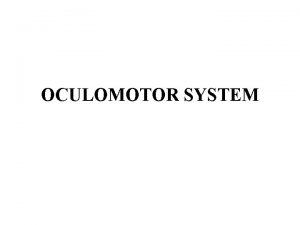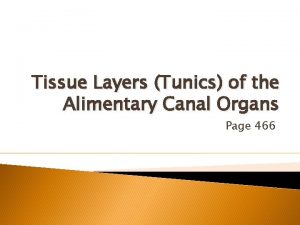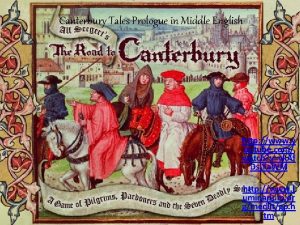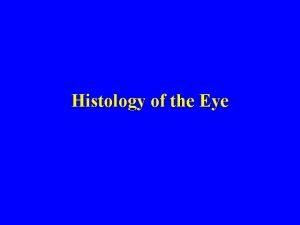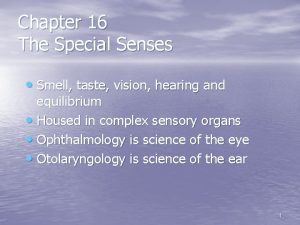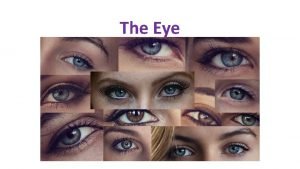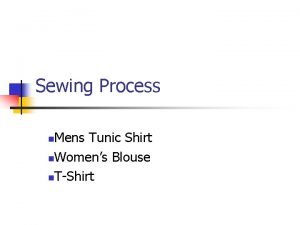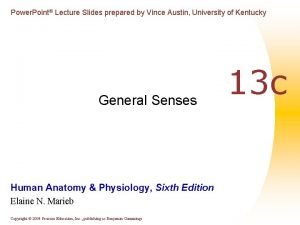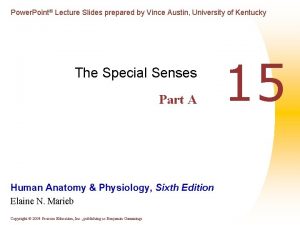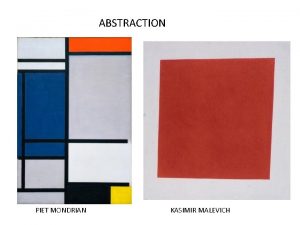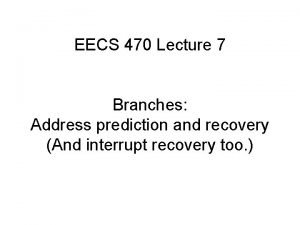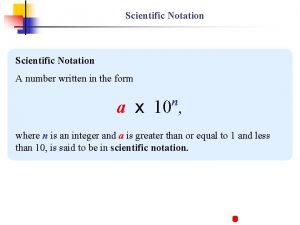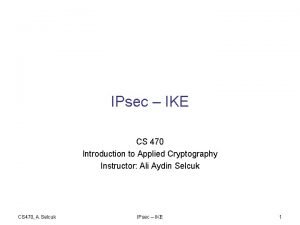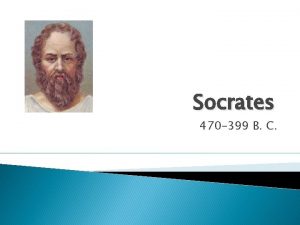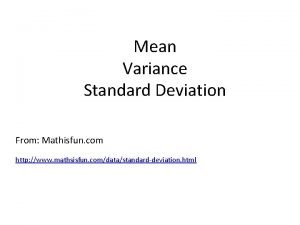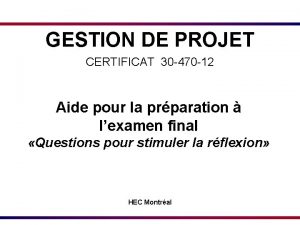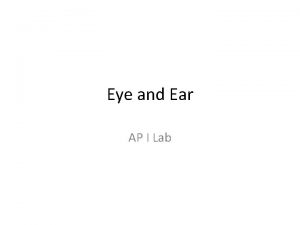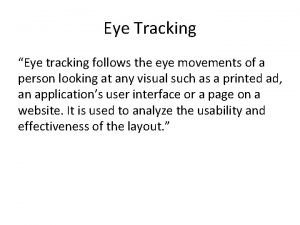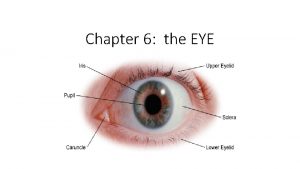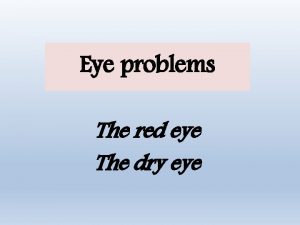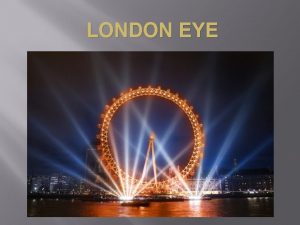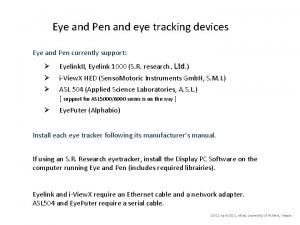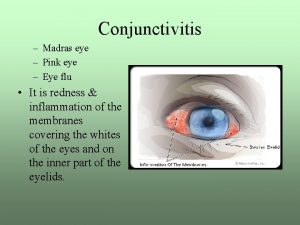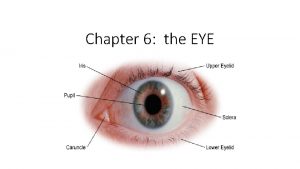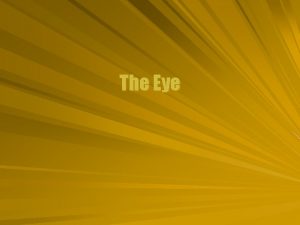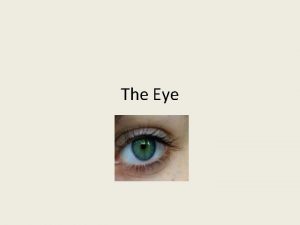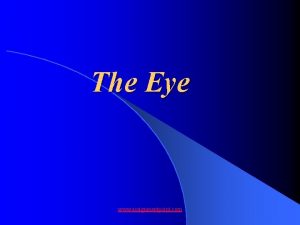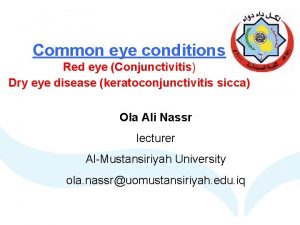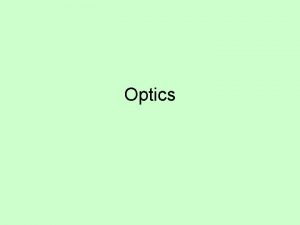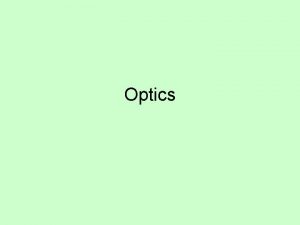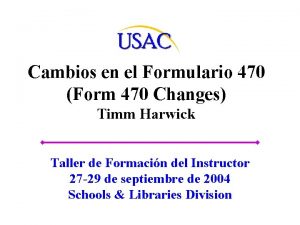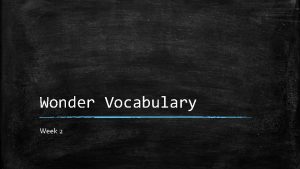Structure of the Eye Outer Tunic pg 470

























- Slides: 25

Structure of the Eye Outer Tunic (pg. 470) 1. Cornea 2. Sclera Middle Tunic (pg. 470 -474) 3. Choroid Coat 4. Ciliary Body 5. Lens & Accommodation 6. Aqueous Humor 7. Iris 8. Pupil Inner Tunic (pg. 474) 9. Retina & Optic Disc 10. Posterior Cavity • Function • Illustration • Location • Identifying Features/Other info

Sponge: Set up Cornell Notes on pg. 69 Topic: 12. 6: Structure of the Eye Essential Questions: 1. How does the shape of the lens change during accommodation? 12. 6: Structure of the Eye 2. 1 Atoms, Ions, and Molecules

Pg. 68 Human Body: Pushing the Limits: Sight • Take at least 15 bullet points

Directions: • You will need 12 colors for your table • As we go through each part of the notes, please color-code and label the “diagram of the eye” AND your Brace Map notes • Also, add any missing info.

Structure of the Eye Pg. 69 • Hollow • Spherical (2. 5 cm diameter) • Wall has 3 layers • outer fibrous tunic • middle vascular tunic • inner nervous tunic 5

Outer Fibrous Tunic Cornea • Anterior 1/6 of outer eye • “Window of the eye” • Focuses incoming light rays • Transparent • No blood vessels • Well supplied with nerves • Many pain receptors 6

7

Outer Tunic Sclera • Posterior 5/6 of outer eye • White portion of eye • Protects the eye • Attachment for extrinsic muscles • Optic nerve pierces the sclera in the back 8

9

Middle Tunic Choroid coat • Many blood vessels • provides blood supply • Many melanocytes • pigments absorb extra light • Keeps inside of eye dark 10

Choroid Coat 11

Middle Tunic Ciliary body • Anterior portion of middle tunic • Holds lens in position • Moves lens • Secretes aqueous humor into the posterior chamber 12

Middle Tunic • Lens • Lies behind iris and pupil • Elastic • Under constant tension • Puts near/far objects into focus • As we age, lens becomes larger and less elastic which leads to vision impairment Accommodation: Close viewing Far Viewing Suspensory ligaments relaxed contracted Ciliary ligaments contracted relaxed 13

Figure 12. 29 • changing of lens shape to view objects Accommodation

Ciliary Body 15

Aqueous humor (a-quee-us): fluid that circulates through the pupil and into the anterior chamber of the eye • Provides nutrients • Maintains the shape of the front of eye • Removes waste • If drainage is blocked—leads to glaucoma which can result in blindness 16

Middle Tunic Iris • Colored portion of eye • Lies between cornea and lens • Smooth muscles control the size of the pupils • Pupils • Controls light intensity • Constricted: less light in • Dilated: more light in 17

Iris Pupil 18

Inner Tunic Retina • Contains visual receptors (photoreceptors) rods/cones • Continuous with optic nerve • macula lutea (mac-ula lu-tay-a) –spot in retina; absorbs extra light • fovea (fo-vea) centralis – center of macula lutea; region of retina that produces the sharpest vision; has largest concentration of cone cells • optic disc – Blind spot; contains no visual receptors • Nerve fibers leave here and become part of the optic nerve 19

Retina Optic Disc Optic Nerve 20

Inner Tunic • Posterior Cavity • largest compartment in eye • contains vitreous (vi-tree-us) humor – jelly-like substance that holds retina flat against choroid coat maintaining pressure • Helps transmit light to retina 21

Posterior Cavity 22

Extrinsic Eye Muscles 23

Video Notes: Split pg. 69 into four sections • Outer fibrous tunic • Inner nervous (sensory) tunic • Middle vascular tunic • The Humors and the Lens • 3 -5 Bullets Each 24

Layers of the Eye 25
 Innermost tunic
Innermost tunic Pinna below outer canthus of eye newborn
Pinna below outer canthus of eye newborn Outermost layer of cornea
Outermost layer of cornea Outer fibrous layer of the eye
Outer fibrous layer of the eye Alimentary canal tunics
Alimentary canal tunics Sergeant of the law canterbury tales
Sergeant of the law canterbury tales N
N Tunic
Tunic Tunic
Tunic Extrinsic muscles of eye
Extrinsic muscles of eye Mens tunic shirt
Mens tunic shirt Fibrous tunic
Fibrous tunic Fibrous tunic
Fibrous tunic Pablo picasso masks
Pablo picasso masks Eecs 470
Eecs 470 470 クラスルール
470 クラスルール Eecs 470
Eecs 470 Without writing
Without writing Cs 470
Cs 470 Cs 470
Cs 470 Umich eecs 470
Umich eecs 470 Cs 470
Cs 470 Sfu cmpt 470
Sfu cmpt 470 Socrates 470 399 bc
Socrates 470 399 bc Math is fun average
Math is fun average 470 12
470 12
